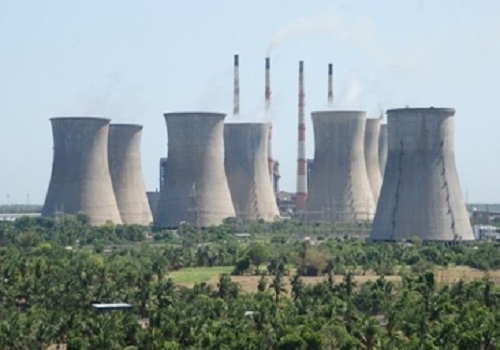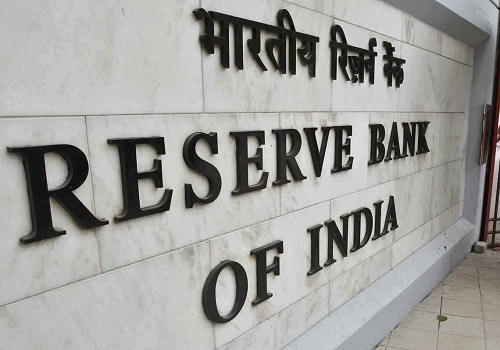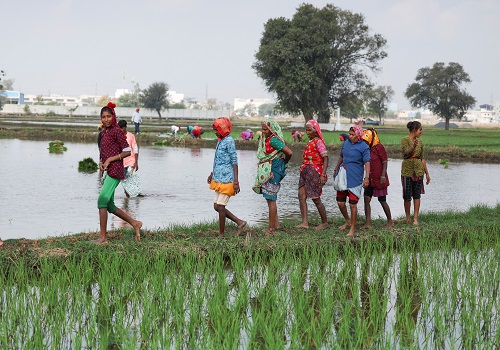Climate change casts a shadow on agriculture; growth rate dips to worryingly low

Follow us Now on Telegram ! Get daily 10 - 12 important updates on Business, Finance and Investment. Join our Telegram Channel
https://t.me/InvestmentGuruIndiacom
Download Telegram App before Joining the Channel
Climate change has emerged as a formidable challenge to sustainable agriculture as an erratic monsoon this year hit India’s farm output triggering a rise in food inflation which forced the government to take mitigation measures such as clamping down on exports.
As kharif production fell due to the freak weather, the growth rate of the country’s agriculture sector declined to a meager 1.2 per cent in the July-Sept quarter. The adverse impact has spilled into the ongoing rabi season with the total sown area declining by over three per cent with a below-normal monsoon leading to moisture deficiency in the soil and decreased water storage in reservoirs.
The acreage under wheat and pulses has declined by three per cent and eight per cent respectively which has raised concern over a fall in overall food production going ahead.
There is now a great concern within policymakers and the scientific community to evolve dynamic response strategies to deal with this complex phenomenon of climate change, especially since vast areas in some states are still dependent on rain-fed agriculture.
However, despite the current decline in rabi acreage, officials in the agriculture ministry believe that the gap can potentially be narrowed in the next few weeks. They anticipate that the overall sown areas for rabi crops might reach the average levels of the last five years (648 lakh hectares).
Officials attribute the reduced acreage for pulses to late harvesting of kharif crops, like paddy, and a trend toward crop diversification.
There is some consolation in that the acreage for oilseeds, including mustard and rapeseeds, is higher this year by 1 lakh hectares compared to 2022 which would help in reducing the country’s import bill for edible oils.
Senior officials point out that the emphasis on oilseeds reflects strategic measures to enhance self-sufficiency. While challenges persist due to weather-related constraints, the agriculture ministry's positive outlook of a potential rebound is based on the resilience of the agricultural sector.
Balancing crop diversification and addressing moisture deficit will be pivotal for securing a robust foodgrain output in the upcoming season.
“Since 2014, as many as 1,888 climate resilient varieties of seeds have been developed for crops. Besides, 68 location specific climate resilient technologies have been developed and demonstrated for wider adoption among farming communities in districts and regions prone to extreme weather conditions like droughts, floods, frost and heat waves,” Minister of Agriculture and Farmers Welfare Narendra Singh Tomar informed the Lok Sabha earlier this year.
India is the world's second-largest producer of wheat, rice and sugar, but has been forced to restrict exports of these commodities to rein in rising domestic prices. The country is the world’s largest rice exporter and has been ensuring food security in countries across Asia, Africa and the Middle East.
The ban on exports has, therefore, impacted the food availability in these countries as well. India's agricultural exports are expected to drop by $4 billion to $5 billion this year.
However, senior government officials are optimistic. Rajesh Agarwal, an additional secretary in the commerce ministry, is of the view that growth in exports of other farm commodities will offset the export deficit this year.
"If we remove agricultural commodities like wheat and rice, whose exports are controlled, other food exports are growing by over four per cent," Agarwal told journalists.
"So, despite the shortfall of about $4 billion to $5 billion that we face because of restrictions on sugar, wheat and rice, we should be able to meet last year's export levels," he said.
Data from Agricultural and Processed Food Products Export Development Authority (APEDA) showed that exports of meat and dairy, cereal preparations, and fruits and vegetables rose between April and November this year.
On the other hand, according to a report by rating agency ICRA, the first advance estimates of kharif production suggest foodgrain production declined to a four-year low of 148.6 million tonne, a sharp 4.6 per cent lower than last year’s final estimates. Even crops that recorded an increase in their sown areas this year are expected to see a dip in output, including sugarcane (-11.4 per cent), rice (-3.8 per cent) and coarse cereals (-6.5 per cent).
“Notably, the decline in the output of most crops is larger than the fall in their area sown, reflecting a contraction in yields,” the ICRA report added.
A weaker rural economy also prompted the rating firm to add downside risks to its forecast of a 0-2 per cent growth in tractor sales for the year, after they declined 3.7 per cent in the first half and 0.5 per cent through October and November.
Climate change has also triggered unseasonal rains that have damaged crops. Around 8.68 lakh hectare crop area across states is reported to have been affected by floods or heavy rainfall this year.
The monsoon had got off to a delayed start in June after which there was excess rain in July followed by a deficit in August and then excess rains in September again in certain parts of the country, such as Punjab and Haryana, which hit the standing crop.
This had resulted in a sharp increase in the prices of vegetables, especially tomatoes and onions that triggered a spike in inflation.
Another crucial factor weighing on the farm sector going ahead is the amount of water that is currently available in the country’s reservoirs across states. About 80 per cent of India’s rainfall comes during the southwest monsoon which also fills up the country’s reservoirs that are used for irrigation during the next agricultural season. With the deficient rainfall this year, the water storage in the reservoir is reported to be around 75 per cent of last year which could impact agricultural output in the forthcoming rabi season.




















